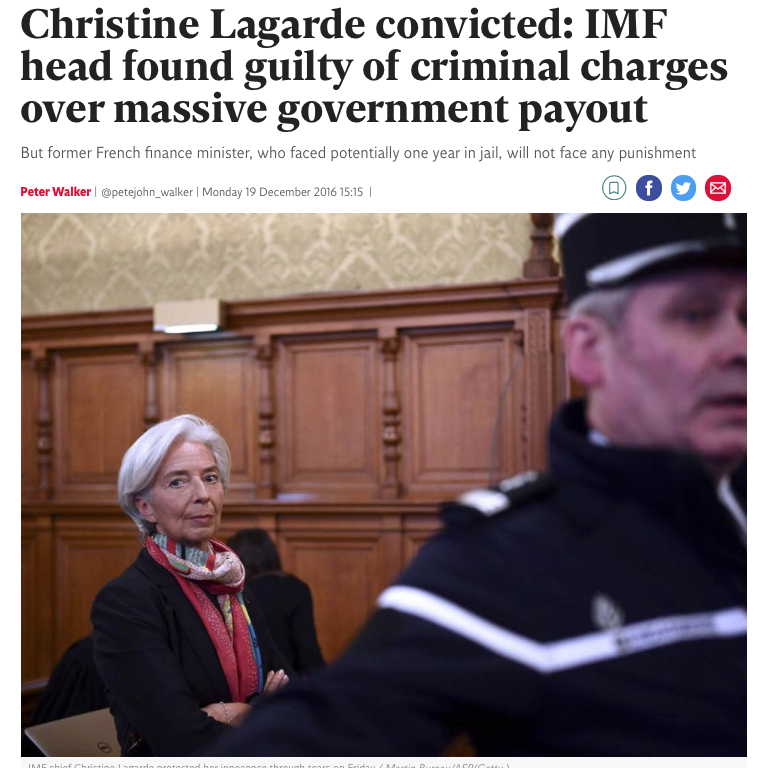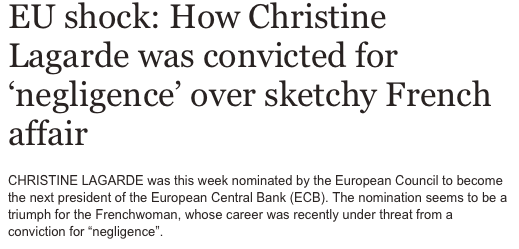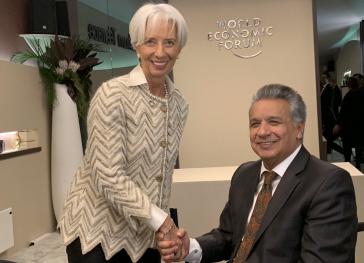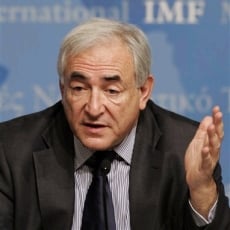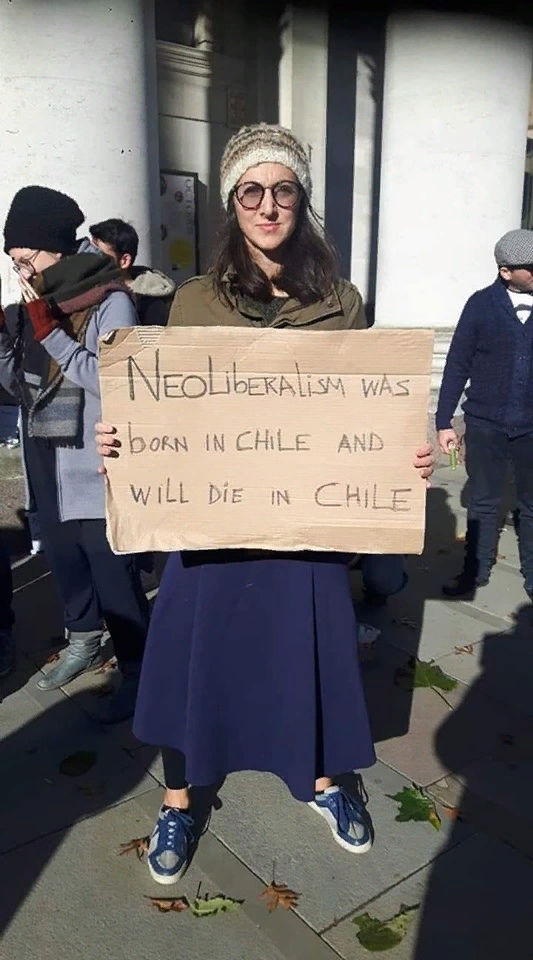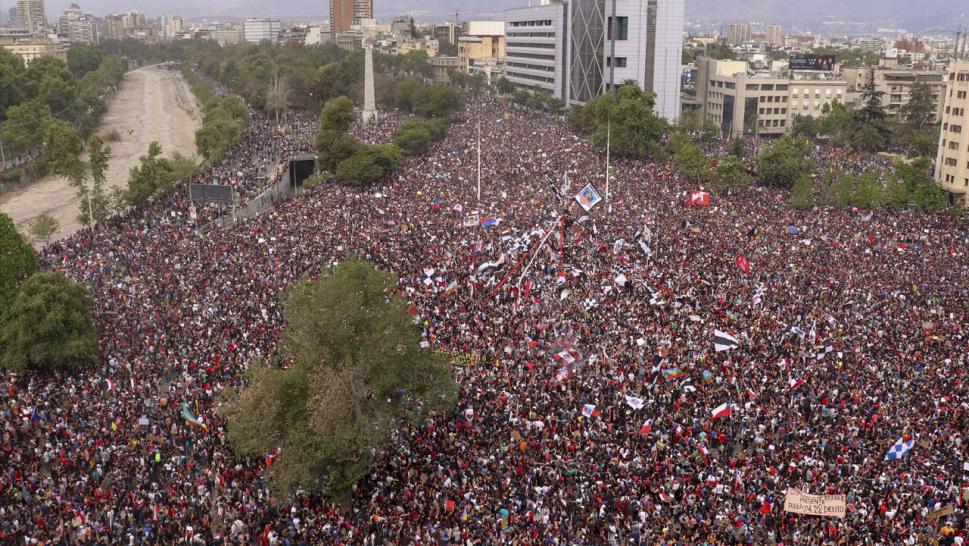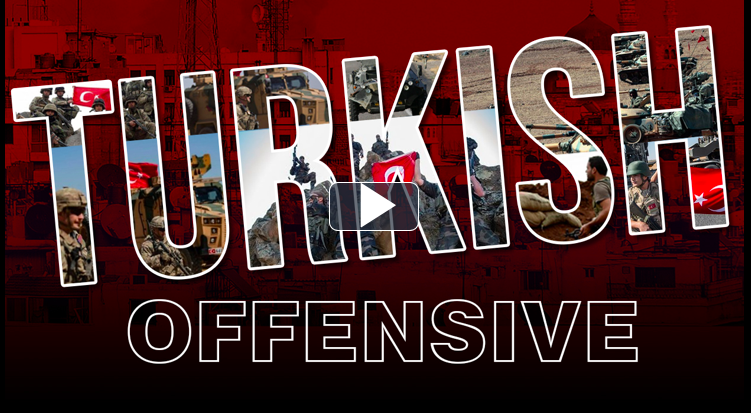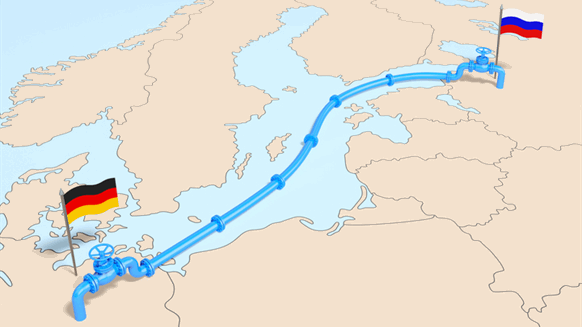For last thirty years, the world has been watching the saga of downfall of the Japanese economy.
In particular, the world has been watching with curiosity and even worry about the amazing adventure of Abenomics.
The disappointing performance of the Japanese economy and the amazingly inefficient Tokyo’s policies have produced the “Japanzation” of the economy meaning the three-decades of economic recession followed by depression and deflation.
There is no reason why other economies will not share the same hateful experience in the future. In fact, there were some voices, thought weak, of worry about such possibility in Korea before the take- over of power by Moon Jae-in in 2017.
Since the declaration of Abenomics, in 2013, the growth rate of Japan’s GDP is no longer of minus figure, but still the lowest among the advanced OECD countries.
The per capita GDP fell from US$ 44,674 in 2010 to US$ 39,295 in 2018.
True, there are a few encouraging signs. The number of jobs has increased; the consumer price index is no longer zero but still below 2% which had been the policy target. The value of Yen fell by 20% but did not help much Japan’s exports.
You may say that these data mean a success of Abenomics, but, if it is, its social cost is high. The fiscal incentive policy has imposed on the Japanese people a national debt ratio of 250%, the highest in the world of advanced countries.
The central bank of Japan has applied so called “quantity easing” in order to prepare and inject liquid money amounting as much as 88% of GDP into the financial market with no convincing results.
But, before anything else, the suffering that the Japanese people had to endure because of the wrong policies of the government should deserve our attention.
Declining real household income and increasing non-regular jobs, the lack of adequate care for the elderly, the refusal of the young to get married are some of the collateral damages of the wrong judgements of policy choices and execution.
What is really surprising is this. Despite such long deflation and suffering, Japanese people have not shown massive protest. Is this due to their legendary docility? Or is it attributable to their fear of severe punitive reaction by the government?
Many will ask the question: Is Abenomics a failure or a success?” This question is of course important, but the more important question is: “What is the lesson of the deflation of thirty years?” I will try to answer this question later.
This paper has four parts.
First, we will see how the Japanese economy has evolved since WWII. Here, we borrow some of the ideas found in the theory of economic development by stage.
Second, we will see who were responsible for the creation of the bubble in the first place and its explosion in 1989.
Third, we will discuss the policy measures adopted by the government.
Fourth, the focus will be on the reason for the policy failure. And we will seek for policies better suited for the recovery of the Japanese economy.
1. Evolution of the Japanese Economy
There can be several indicators of economic growth and development, but GDP is, perhaps, one of the useful yardsticks. The evolution of the Japanese economy has gone through the following stages: take-off, accelerated growth, stable growth and stagnation followed by deflation.
It appears that the Japanese economy took off in the 1950s and the first half of 1960s. During this period, Japanese economy grew, at time, as fast as more than 20% per year in the 1950s, 9.2 % in the first half of the 1960s and 11.4 % in the latter half of the 1960s.
This period of rapid growth was attributable to American Dodge Plan, the Korean War, the successful adaptation of American high technologies to Japan’s needs, managerial innovations undertaken by major corporations such as “just in time delivery” and the Confucian human resource management such as life-time job and seniority-based wage system.
This period was one of the “Japanese Miracle.” Japan was admired; Japan was envied; Japan was imitated.
Then, from 1970s for two decades, the Japanese GDP grew at about 4.5% per year. This period was the stage of stable growth. One thing unusual was that the rate of GDP growth dramatically fell by 60% (6.9 percentage point), compared to previous stage (11.4%); this was unusually violent fall.
This could have been due to Japan’s loss of technological edge. In fact, much of Japanese technologies were modified versions of American technologies; they were not the original technologies invented by Japan; they were relatively easily transferred to other countries, such as South Korea and Taiwan
Moreover, this period was the beginning of significant moving of a number of Japanese firms to low-wage countries. This was another factor responsible for the decrease in the GDP growth rate.
However, the most significant factor was the weakening global competitiveness of Keiretsu firms (large industrial, financial and trade corporations) which were the post-WWII version of Meiji Era’s Zaibatsu. The Zaibatsu played the central role for the success of the Meiji Restoration in the latter half of the 19th century.
This period was also the period of the creation of the bubble and dramatic bursting of the bubble. We will come back later to this issue.
The decades of stable growth was followed by the decades of deflation and stagnation. After the bubble explosion in 1989, the average annual rate of GDP growth in the first half of the 1990s dropped to 1.72% from 5% of the preceding five years. This was the beginning of three decades of painful stagnation and deflation.
During the period of 1996-2018, the annual GDP growth rate never exceeded 1.0% with the exception of the first half of the 2000s when the growth rate was 1.22%
There were periods of minus growth rates. In 1998, GDP fell by 2.0% and in the following year, it came down by 0.2%. In 2007, the growth rate was minus 1.0%, while it was as low as minus 5.5% in 2008. In 2011, the Japanese GDP shrank by 0.5%.
Such is the saga of the incomprehensible breakdown of the number-two economy of the world
2. The Bubble and the Oligarchy
The world was shocked by the explosion of the huge bubble in 1989. The value of stocks fell by 60% in 1990; the value of real estate had a free fall of 80%. This bubble bursting hit hard Japan, very hard.
Why such a dramatic fall? The answer: “It is because the price went up too high in the past!” In 1988, the price of Ginza area land of one square meter was US$139,000.
The area of the Japan’s territory was 37% of that of the U.S., but the value of Japanese real estate was in 1988, four times that of the U.S. The value of stocks in the Tokyo stock market soared from 60% of GDP in 1985 to 152% of GDP in 1989.
Who and what were responsible for such a bubble? It is true that the Plaza Accord of 1985 was perhaps responsible in part. The resulting dramatic appreciation of Yen in comparison with the value of US dollar might have attracted foreign capital to be invested in real estate and stocks for speculative purpose.
In 1985, to get one US dollar, Japan had to pay 242Yens, but in 1988 the cost of one US dollar declined to 120 Yens. This was an increase of 50% in the value of Yen.
But the real factor was, most likely, the speculative investments in stocks and real estate undertaken by the well connected Japanese individuals, big business firms and banks.
The 1980s were an era of economic honeymoon for Japan. GDP grew more slowly, but things were plenty for most of the Japanese people. Japanese were proud of having caught up with the U.S. economy, in part any way.
Catching up with US in economic development was the ardent dream of the Japanese; this was perhaps their way of revenging for Hiroshima-Nagasaki humiliation.
The money was abundant. There was a lot of savings at banks. The amount of postal savings alone was 70% of the regular government annual budget. The liberalization of the global finance opened the door for banks and companies to international money market. The Keiretsu corporations had their own banks.
So they had the money, they had the chance to make money in the stock market and the real estate market. In fact, the members of the Japanese elite groups engaged themselves in the game of “Zaitech” meaning “techniques of making quick money”; it was the favoured pass time for the elite groups to make money by buying and selling assets for capital gains.
Some of the Japanese investors went to the country of Uncle Sam and bought the Rockefeller Center, the Columbia Picture Company and, even the Pebble Beach Golf Course.
The champion of speculative investors in real estate and stocks was, most likely, the powerful tripartite oligarchy composed of policy maker (politicians), policy executors (bureaucrats) and money makers. (Keiretsu).
The interesting and important question is why the government let the human greed to go wild and paralyze the whole economy.
The possible answer lies in the complicity of the oligarchy members to ignore the danger of the bubble so that they all can become millionaires.
If the oligarchy was responsible for the creation of the bubble, it was also responsible for the failure of properly dealing with the post-bubble problems.
There is no doubt that the oligarchy was the master of the Japan Inc. which made the Japan miracle possible. But, the oligarchy’s policies designed to restore the Japanese economy after the bubble relied on the conventional economic policies, namely the monetary policy, the fiscal policy and the structural adjustment policy.
True, these conventional policies were strengthened by Abe to make it, in 2013, his Abenomics policies, but still they were conventional policies.
Japan should have applied non-conventional policies such as a bold reform of Keiretsu and the expansion of the domestic market through more equal income distribution in favour of the ordinary people
3. Government Policies
The monetary policy applied before global financial crisis of 2007-2008 was the monetary policy based on the manipulation of interest rate. This policy was applied during the violent recession after the explosion of the asset price bubble in 1989.
The price of assets rose so high and increased so rapidly that the Bank of Japan had to do something; it did something all right; it jacked up the bank rate from 2% to 6 % in order to stop possible hyper-inflation.
This was too much. Everything came down. The stock price index in Tokyo hit the ground from 30,000 to less than 15,000; the average real estate price had a free fall of 80%. The panic was inevitable. Japan had to face the threat of a huge recession which could invite deflation.
The phenomenon of deflation is something which happens rarely. It starts with the drastic fall of asset (real estate) price below the value of mortgage (debt). This means that the debtor has no longer the capacity to pay back the debt. The debtor has one realistic choice; the debtor has to sell the property. If many debtors do the same thing, then price falls more.
Since the amount of debt is greater than the value of the asset, the borrower cannot pay the debt, the banks end up with huge amount of bad debts. Then, cash crunch follows; banks cannot make new loans. The consumer demand weakens; the production of goods and services falls; the number of jobless increases. The household income goes down and the vicious circle gets worse. The vicious circle continues until such time as the economy crumbles.
This was what happened in 1991 in Japan. The policy measure needed immediately was the downward adjustment of the central bank rate. But, the Bank of Japan waited until 1994 before its rate came down almost to 0 %. Here, Japan made the first mistake. The pulling down of interest rate came too late; the recession after the bubble explosion never recovered; the period of deflation followed.
The post-1994 policy was the conventional monetary policy of adjusting the central bank interest rate in order to adjust the demand for money for business investment and consumer demand. Given the depth of the deflation, the Bank of Japan had to keep the interest as low as possible to near 0 % until the middle of the 2000s.
Once you have zero interest rate, you have what is called “liquidity trap” and the conventional monetary policy is no longer working.
Having failed to produce expected results with the conventional monetary policy, the Bank of Japan began the policy of “quantity easing” (QE) in the 2000s. It became the major tool of Abenomics in 2013. The QE policy consists in opening at the central bank the current account of commercial banks. This means the creation of money which can be used by the commercial banks
It amounted to no less than US$ 923 billion in 2013, US$ 1,055 billion in 2014 and US$ 656 billion in 2015. By 2018, the cumulated amount of QE was as much as 88% of GDP in Japan as compared to 24% in the U.S., 34% in EU and 24% in UK.
Many countries including the U.S. and China used QE after the 2007-2008 global financial crisis produced by the American financial sector. But no country was flooded with liquid money as much as Japan.
Such huge injection of money has ended up by increasing the supply of money (M3) so much that, in the early 2010s, it accounted for 252.1% of Japanese GDP as against 151.5 % in Korea, 199.1% in China and 89.5% in the U.S. Money was not scarce; there was huge money flood in Japan.
The question is: “What did QE do in order to revitalize the ailing Japanese economy?” Most of the money was spent for prolonging the life of companies which were unproductive, insolvent and uncompetitive. This policy has prevented the Japanese companies from improving their global competitiveness. The money was spent for giving grants, bailing out and nationalizing companies in trouble.
In 1997, the Sanyo Securities and the Yamaichi Securities were bailed out. In 2000, the Deici Retail chains were bailed out. In 2013, Rosana Bank got the same treatment. Countless zombie firms were saved.
In 1999, Daiwa Bank and Asahi Bank were given large amount of grants. Similarly in 2002, the Sogo Retail Store chain received generous financial aid.
It is true that the government has also tried the M&A of banks; in 2008, 27 banks were merged into 4 banks groups.
What did the commercial banks do with the flood of liquid money apart from financing the bailouts of troubled companies? Not much; the QE policy was not able to restore the Japanese economy.
The primary reason was that there was not much demand for money.
This is explained by two reasons.
First, for decades, the household income stopped to increase; so, there was not much new demand for money needed for the consumption of goods and services. The increasing inequality of income distribution has worsened the income situation of the Japanese people
The inequality of income distribution is measured by the Gini coefficient which goes from zero to 100. The lower the Gini, the more equal the distribution of income is; the higher the Gini, the more unequal the distribution becomes.
The Gini coefficient in Japan has increased from 32.1 in 2008 to 37.9 in 2011. If this trend continued, the Gini in 2019 could be much higher.
Second, there was not enough demand for money by exporters, for Japanese exports did not increase due to the loss of global competitiveness of Japanese companies, especially the Keiretsu companies.
Under this situation, the banks had the burden of managing the huge stock of idle liquid money. So, they made loans to pay back existing debts; they could invest the interest-free money in assets abroad.
The second policy was the fiscal policy. The government of Japan spent an astronomical amount of money in order to recover from the decades-long deflation. For this, the government had to borrow heavily; in fact, the public debt is now more than 250% of GDP amounting 13 trillion USD.
Most of these funds were used for the construction of infrastructure facilities including a bridge in the Tokyo area, a bridge which went nowhere..
The fiscal policy has not done any better than the monetary policy in saving the Japanese economy from deflation. It is possible that much of money spent went to constructions firms which were directly or indirectly related to the oligarchy members.
Now, the third Arrow of structural adjustment policy was designed, in theory, to change the structure of the whole system of the economy. This was announced in 2015 when the second stage of Abenomics was explained.
The policy tackled the problems of education, labour force, innovations, fee trade and host of other problems. But this policy came too late and did not deal with the real problems of improving the competitiveness of large corporations and the underdevelopment of SMEs.
4. Conclusion
Three sets of policies were applied: monetary policy, fiscal policy and the structural adjustment policy. None of these policies was successful in restoring the sinking Japanese economy. Why?
The primary factor responsible seems to be the loss of global competitiveness of the Japanese economy. The loss of the strength of Japan’s global competitiveness is primarily due to the poor performance of Keiretsu corporations.
Between 2005 and 2011, the foreign market share (percentage of sales abroad) of Japanese auto makers’ production dropped in a dramatic manner. The foreign market share of Toyota fell from 51% to 41%, while that of Honda dropped from 39% to 29%.
The performance of the electronic industry was even worse. For instance, from 1995 to 2007, Japan’s foreign market share of the production of DRAM Memory came down from 42% to 9%. In the case of car navigation equipment, the foreign market share which had been 100% collapsed to 0%.
The picture of auto makers profit was not pretty either. Between 2001 and 2011, Mazda’s profit slipped from 4.3% to 2.8%; in the case of Toyota, it came down from 9.9% to 1.9%; in the case of Honda, it dropped from 8.8% to 2.9%
These figures show by what extent the Keiretsu companies have lost their place in the global market.
There is another factor which must be dealt with, if Japan wants to restore its economy.
It is Japan’s isolationism. Japan should come out of isolationism. One of the challenges which Japan must deal with is the declining population. The absolute number of population has been declining to reach 126.5 million in 2019 and it will go down to 100.0 million by 2050.
To make the matter worse, the proportion of elderly of 65 years or more has reached already 28.0% in 2018 from 17.4% in 2000. This means the decrease of active population of 15-64 years which accounted for 67.9% in 2013 dropped to 59.3% in 2019, or a decline of 1.4% point per year. This is too much.
This demographic aspect of the Japanese society must be dealt with, but it seems rather difficult to do so, because of Japan’s isolationism or racism. Perhaps, the only way to deal with declining population and the shortage of working population is immigration.
Japan is one of the most anti-immigration nations in the developed world. In 2016, immigrants in Japan were merely 1.6% of the total population as against 12.2% in OECD countries. In Canada, immigrants represent more than 25% of its total population
Japan’s isolationism is also represented by the reluctance of Japanese youth to go abroad to study. Japan’s another problem is its reluctance of accepting foreign direct investments (FDI). It was only 5% of GDP in 2019 as compared to 15% in Korea and 50% in the UK.
I was told that Ph.D. obtained abroad is not as much valued as Ph.D. obtained in Japan
Such anti-foreign things could be a factor which prevents Japan from importing new technological know-how and needed labour force.
Another factor which might be included in the strategy of revitalizing the economy is the mechanism through which the people can prevent any given party from monopolizing the power for ever, as did the LDP (Liberal Democratic Party) of Abe.
There is close positive correlation between the longevity of political party power and the corruption of the government. The corruption of the government can easily lead to policies which can be used for the selfish interests of the oligarchy at the expense of the national interests.
So, it is important for the Japanese people not only to watch closely government policies but also participate actively in the policy making process
To conclude, the saga of “japanization” provides a very useful lesson for us all.
The lesson is this. In Japan, Korea and in many other countries, the oligarchy plays a vital role in the early stage of economic development for the mobilization of national resources, capital formation, construction of industrial and social infrastructure facilities, market development and the development of all sorts of institutions needed for the take-off and the sustained growth of the economy.
But, there is a trouble. In order to accelerate the development of the economy, at the early stages of the economic development, the government allocates most of available resources to large corporation at the expense of the development of SMEs and the welfare of the people.
As long as the large corporations remain competitive, the economy continues to grow, but when they lose their competitiveness, we have problems.
Large corporations lose their competitiveness primarily because of the intensifying international competition and the lack of flexibility due to large size.
But there is another reason. Their global competitiveness has been assured, in part, owing to government subsidies and other forms of aids. But as the rate of economic growth slows down, the government can no longer provide such aids
When this happens, the growth of the economy slows down.
SMEs should take over the big firms and restore the economy. After all, SMEs in Japan account for 99.7% of the total number of firms and 87% of job creation. But the SMEs could not have developed because of the government’s pro-large corporation policies; SMEs cannot be a great help.
The only solution is the bold structural reforms which should aim at the following objectives: supply of needed labour force through immigration of people, liquidation of non-competitive large corporation, strengthening SMEs competitiveness, widening and deepening the domestic market through more balanced income distribution and sustained communication between the government and the ordinary people.
What has happened in Japan is the story of how the economic miracle can be realized owing to the devotion and strong will of the oligarchy; it shows, at the same time, how the economy can crumble because of wrong policy choices made by the oligarchy and the unfair distribution of the fruits of the miracle.
This can happen to many countries, especially developing countries. There is only way to prevent it; it is the direct participation of the ordinary people in policy decision making.
It is happening in Korea where, since Moon Jae-in took over the power in 2017, if more than 200,000 people ask the Blue House to take certain measures, the government must reply and react.
Moreover, the greater freedom of press and the interventions of NGOs constitute effective mechanism of watching over public policies and preventing the abuse of power and privileges by the elite of the society
*
Note to readers: please click the share buttons above or below. Forward this article to your email lists. Crosspost on your blog site, internet forums. etc.
Professor Joseph H.Chung is professor of economics and co-director of the East Asia Observatory (OAE) of the Study Center for Integration and Globalization (CEIM), Quebec University in Montreal (UQAM). He is a Research Associate of the Center for Research on Globalization (CRG).




 e pointed out that there were bullet holes in the fuselage of MH17, which was later corroborated by the next speaker, Peter Haisenko. A BUK missile — identified by the JIT report as the weapon used — cannot make these holes. The third point raised as evidence that the JIT report is flawed is the fact that there was no BUK missile fired in the vicinity at the pertinent time because it would have left a visible vapour trail that would remain in the air for at least 10 minutes before evaporating. There is no satellite evidence of such a trail. Professor Chossudovsky concluded from this that a BUK was never fired and that, therefore, MH17 was not downed by a BUK missile. There was also no evidence that the separatist rebels had deployed BUK neither before nor after the event.
e pointed out that there were bullet holes in the fuselage of MH17, which was later corroborated by the next speaker, Peter Haisenko. A BUK missile — identified by the JIT report as the weapon used — cannot make these holes. The third point raised as evidence that the JIT report is flawed is the fact that there was no BUK missile fired in the vicinity at the pertinent time because it would have left a visible vapour trail that would remain in the air for at least 10 minutes before evaporating. There is no satellite evidence of such a trail. Professor Chossudovsky concluded from this that a BUK was never fired and that, therefore, MH17 was not downed by a BUK missile. There was also no evidence that the separatist rebels had deployed BUK neither before nor after the event.



